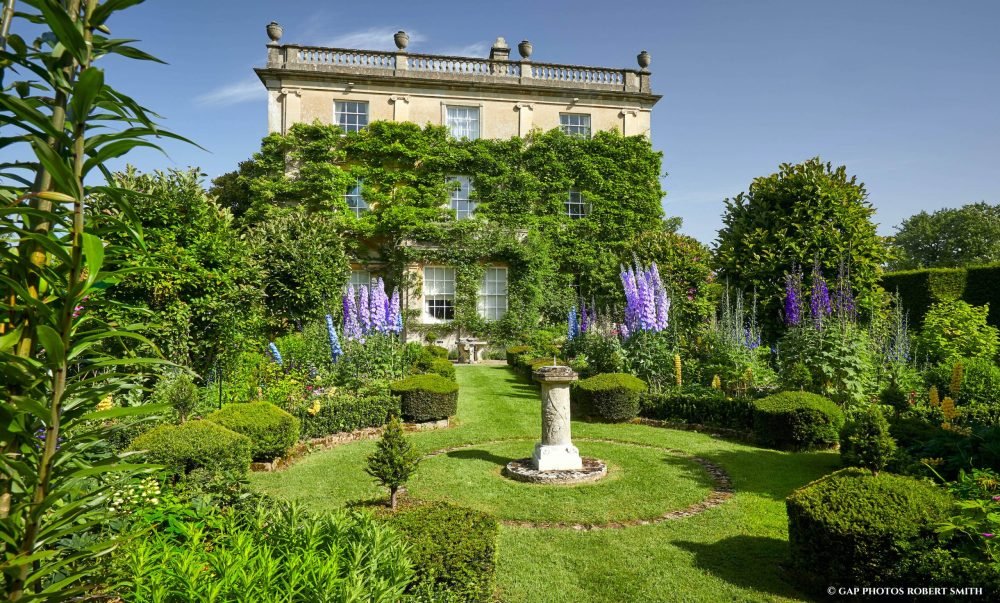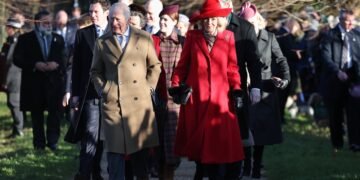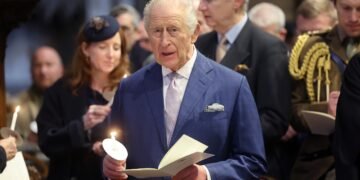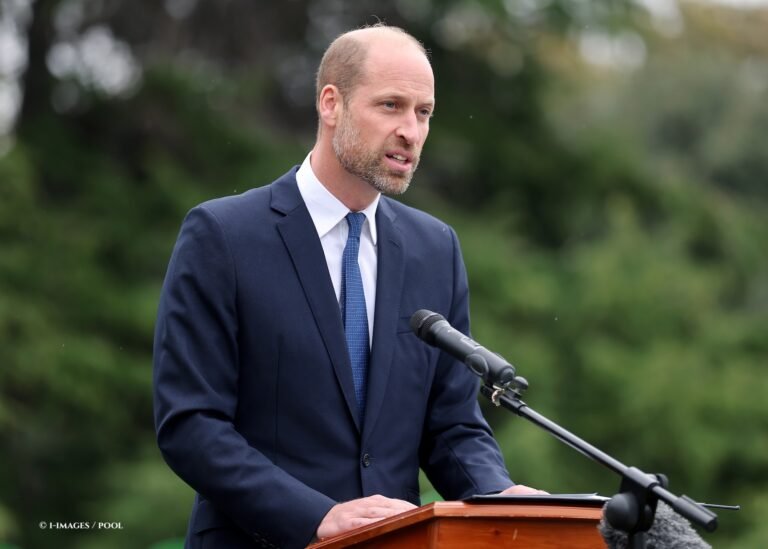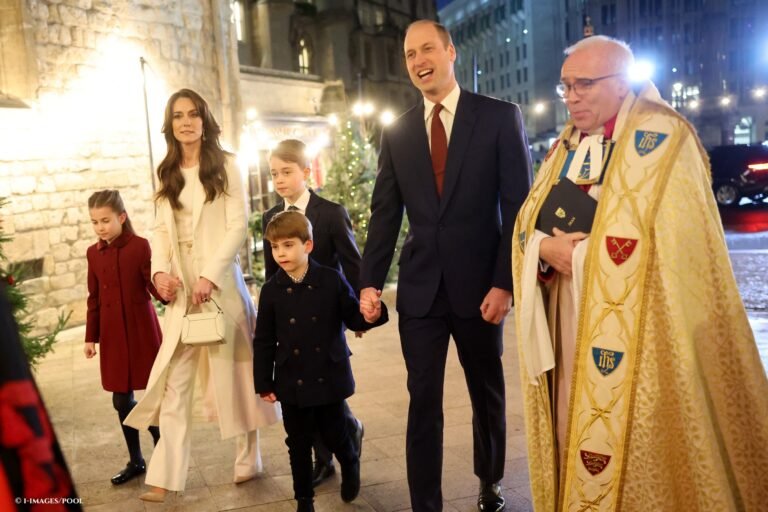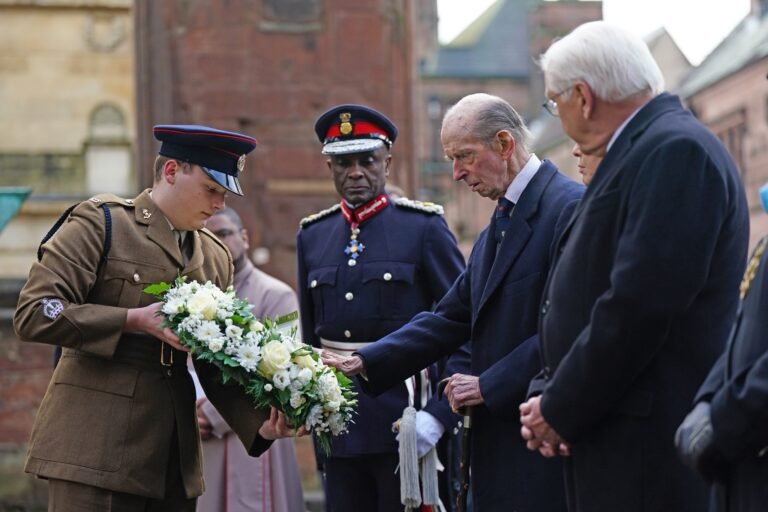It was the moment he had dreaded, yet also the moment he had waited a lifetime to come. Prince Charles became King following the death of his mother in September 2022. As he told the Prime Minister Liz Truss, he knew the enormity of the job he’d inherited and how he had to ‘keep everything going’.
No time for personal grief, King Charles III embarked on an exhausting period of public mourning. After a week, it was reported the new King would take a day’s rest at his Gloucestershire home, Highgrove, just a couple of miles from Tetbury in the Cotswolds. It’s where Charles raised his family and where royal biographers say he feels he can really be himself.
So what does Highgrove tell us about Charles, and perhaps what kind of King he will be? I visited the house and gardens to find out…

My visit to Highgrove
Security is tight as we arrive and the flag is flying from the rooftop suggesting His Majesty – the new King – is in residence. With the Autumn mist starting to clear, we are led through an ornate wooden door into the garden.
At first it appears as you may expect, immaculate yew hedging that had just had its annual trim. But as you venture further into the garden, the formality gives way to a certain wildness that is at times a little bonkers. The famous Thyme Walk is peppered with large yew bushes that Charles christened ‘the puddings ‘. The Prince of Wales was advised to rip them out when he bought the estate, but instead gave his gardeners free rein to cut them into whatever shapes they wished. The result is quite fantastic – like something from Alice in Wonderland.

The Thyme Walk is so called because it was planted with many varieties of thyme, as well as golden marjoram primroses and lavender. I say ‘was’, as our garden guide explains that most of the thyme has in fact been eaten by the rabbits, perhaps another nod to Alice in Wonderland; as we walk around the garden, we are reminded again and again to close the gates, lest the local rabbits move in.
The Highgrove estate and its history
King Charles bought the Highgrove estate over 40 years ago. The house was built in the late eighteenth century for the Crawley-Boevey family and is understood to comprise four reception rooms and nine bedrooms across is three stories. It was also at one time owned by the Macmillan family, family member Harold serving as British Prime Minister during the 1950s. Taking ownership in1980, Charles – still Prince of Wales at the time – renovated the property before his marriage to Lady Diana Spencer.
The house is beautiful, but Highgrove is most famous for its garden. Charles once said: ‘The garden at Highgrove really does spring from my heart and strange as it may seem to some creating it has been rather like a form of worship.’


What was parkland, has now been transformed into several exquisite gardens. Charles was helped by some of Britain’s finest designers including the Marchioness of Salisbury, Rosemary Verey and Miriam Rothschild. The different gardens all radiate out from the house creating beautiful vistas from the rooms inside.
The gardens
The Thyme Walk ends at a bubbling fountain, but then the line is continued by a long avenue of lime trees. There is an impressive bronze gladiator, a gift to the King from his friend Lord Cholmondeley, as if standing to attention at the side two enormous stone jars, at least ten feet tall. Our guide tells us the wonderful story of how the jars were bought from an olive oil producer in Italy and sent to England with just the address, ‘Prince of Wales Tetbury’. Incredibly they arrived intact – but to the Prince of Wales pub in the village, much to the consternation of the landlord…
So creating the gardens perhaps an act of worship but was Charles prepared to get his hands dirty himself? Clearly he could have left the physical work to his gardeners, but it would appear our new Monarch is not shy of rolling up his own shirt sleeves.


In an interview with the BBC, he explained how he had planted many of the trees at Highgrove himself, even managing to cut off the end of his finger while banging in stakes. He had to be taken to Swindon Hospital to have it sewn back on. Charles admits to doing less in the garden now he is older (The King turns 74 next month) but still enjoys weeding the beds and admits, like many gardeners, he finds the work ‘totally therapeutic’.
From the avenue of Limes we head to The Stumpery. They were popular during the Victorian times: ferns and moss are grown on upturned tree stumps. It is darker and damper here, and feels more like a rainforest than a garden in Gloucestershire. Lining the paths are an abundance of dusky pink hydrangea and The King’s prized giant leaved hostas, said to be one of his favourite plants. Taking centre stage an enormous bronze depicting the face of his grandmother. This garden for me tells us the importance Charles places on his family. It was his grandmother Queen Elizabeth the Queen Mother who first introduced him to gardening at Royal Lodge in Windsor Great Park.
Charles also told the BBC’s Gardeners Question Time how he and his sister, Princess Anne, enjoyed gardening as children while growing up at Buckingham Palace. They had been given a little plot to cultivate and were taught all the basics by head gardener, Mr Nutbeam.

We are also shown the elaborate tree house the King built for his sons, William and Harry. The tree it was in has since died, but the royal occupant has had the playhouse saved and put up on four standing stones so it could be enjoyed by the next generation. We are told the grandchildren love to come and play and Charles has already got the eldest, Prince George, planting trees.
Enjoying nature and being a part of it is clearly something The King is trying to pass on to his children and grandchildren. Decades ago, and long before it became popular, Charles spoke about the environment and conservation. He advocated for organic farming and here at Highgrove, no pesticides or chemicals are used. All the compost is made using old leaves and all the rainwater, as well as used ‘grey water’ from the house (such as bathwater) is collected into huge tanks buried under the grass to be recycled and used on the flower beds.
In 2010 Charles wrote a book Harmony: A New Way Of Looking At The World where he spoke of the importance of people being more connected to the environment. Now King, Charles personally must remain apolitical, but through his garden at Highgrove, I believe he wants to encourage others to take an interest in nature.

Speaking to the BBC he said: ‘We are losing so much that’s really precious. Just one example is the wildflower meadows all over the country. Most have disappeared. Dug up, ploughed up, sprayed.’
Charles started his wildflower meadow here at Highgrove 40 years ago, and now it stretches over four acres. Being autumn during my visit, the meadow had just been cut to make hay for the animals. Fencing was being erected when I visited to allow sheep to come and graze, an old practice, the animal’s hooves push the seeds from the wildflowers into the soil helping them spread.
Charles, determined that generations to come will be able to enjoy these flowers, has harvested the seeds from 27 rare species and sent them to the Domesday Global Seed Vault in Svalbard. He said: ‘I have battled to preserve and protect the crucially important diversity of flora and fauna that ultimately sustains our survival on this planet. It is more urgent than ever that we act now to protect this diversity before it really is too late.’
Animals, if not rabbits, very much encouraged to come and make the garden their home. In a recent TV interview for Channel 5, King Charles told the poet, Pam Ayres, how he’d installed swift boxes on the estate to try and provide places for them to nest, and that he protects the hedgehogs by putting tiny ramps in all the fountains and ponds, so they can escape should they fall in.

Through another door and into the Walled Kitchen Garden. The former owners kept pigs in here but today it is restored; divided into quarters, it produces fruit and vegetables for the estate kitchens. In the centre a ring of crab apple trees, now in autumn, their golden fruit give the appearance of a crown.
Finally our tour arrives at the house itself. Attractive, but not large or grand – quite homely in fact, a comment we have made previously about Clarence House. Here is the Sundial Garden, so-called because there is a sundial in the centre. It shows what a romantic Charles is: designed by Lady Salisbury, originally it was an old fashioned rose garden. The yew hedging is cut with windows and inside each, a bust of Charles through different stages in his life. Today the roses have been replaced with delphiniums – his favourite – and just beyond in the trees, a beautiful slate sculpture of The King smiling with his arm around his wife, and Queen Consort, Camilla.
Everywhere in this garden are personal touches and clearly this is somewhere very important to The King. It’s where Charles comes to relax and be himself, and just as after his mother’s death, a place to get away from the pressures of state.
https://twitter.com/heatheritv1/status/1580973757585555458
However, Highgrove has now been inherited by the new Prince of Wales, William, in his role as Duke of Cornwall and therefore proprietor of the Duchy of Cornwall. It is not expected he will use the estate, having just relocated to Windsor and already having Anmer Hall to use in Norfolk (which his father now owns). Charles, however, will continue to use this as a retreat. It has even been reported he will pay his son rent.
So Highgrove is a little window into the world of the man who is now our King. I would highly recommend a visit. The gardens open again next Spring (April-October), with all proceeds going to The Prince’s Foundation, Charles’ personal charity which aims to teach and demonstrate principles of traditional urban design and architecture, at which people are the heart.
Just remember to shut those gates and watch out for the rabbits!

